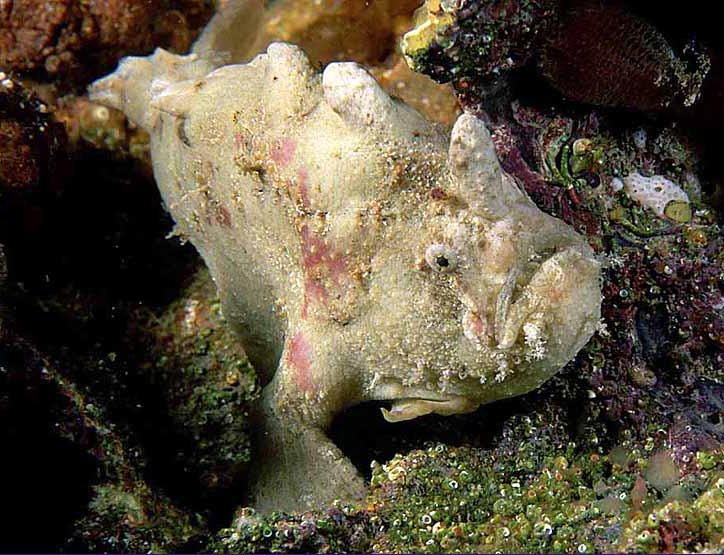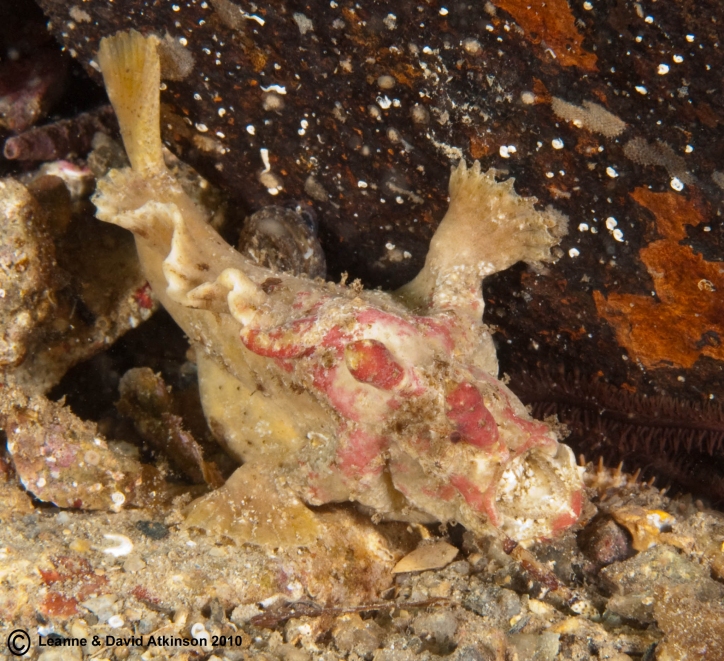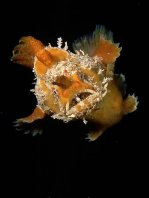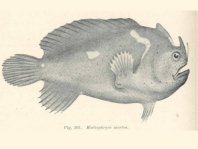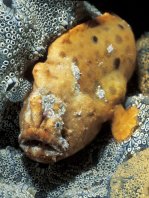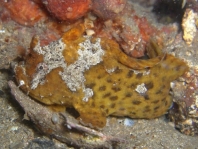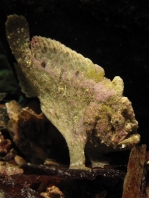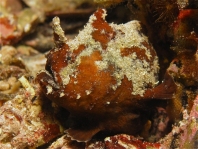
 www.frogfish.ch
www.frogfish.ch

Phyllophryne scortea
(McCulloch + Waite, 1918)
Smooth Frogfish, White-spotted Anglerfish - Glatter Anglerfisch
All frogfish-species (list / color / image) - Alle Anglerfisch-Arten (Liste / Farben / Bild)
Copyright John Lewis (Deep Sea Images), Edithburg Jetty in South Australia
David and Leanne Atkinson, Rapid Bay (South Australia)
Characteristics - Phyllophryne scortea - Merkmale |
||||||||
| Illicium
and Esca: Illicium (rod) can be hidden in a groove, esca (lure, bait) looks like a small amphipod shrimp. Additional Characteristics: Typical are also the bulb-like second and third dorsal spines. The skin is smooth, nearly without dermal spinules but covered with flattened cutaneous appendages, specially on the head and cheek. Caudal peduncle absent. Has swim bladder. Special Behavior: The males of this frogfish species are known to guard their eggs until they hatch (see photo). Feeds on gobies and small squids. More Information: Single species. Further photos of Phyllophryne scortea / Link to fishbase / Pietsch & Grobecker p. 243 Can be confused with: Phyllophryne scortea (Smooth Frogfish) with its smooth skin can't be confused to easily with other species. |
Illicium
und Esca: |
|||||||
Habitat - Phyllophryne scortea - Lebensraum |
||||||||
| Shallow rocky estuaries
to 45m. Lives cryptic and likes to hide under rocks and debris,
usually hanging upside down. |
Seichte felsige Meeresarme bis 45m tief. Lebt versteckt unter Steinen und Schutt, hängt oft kopfüber. | |||||||
Range - Phyllophryne scortea - Verbreitung |
||||||||
| Endemic to Subtropical
Australia (Gulf St.Vincent, Edithburgh, Lusby Island, Spencer
Gulf, Streaky Bay), Tasmania (Port Davey in the south), Western
Australia (south of Perth). Restricted to this area |
Endemisch im subtropischen
Australien (Golf St.Vincent, Edithburgh, Insel Lusby, Spencer
Golf, Streaky Bucht), Tasmanien (Port Davey im Süden) und West-Australien
(südlich von Perth). Nur in diesem Gebiet zu finden |
|||||||
Photos - Phyllophryne scortea - Fotos
|
||||||||
| Further photos of Phyllophryne scortea from the internet |
Weitere Bilder von Phyllophryne scortea aus dem Internet |
|||||||
